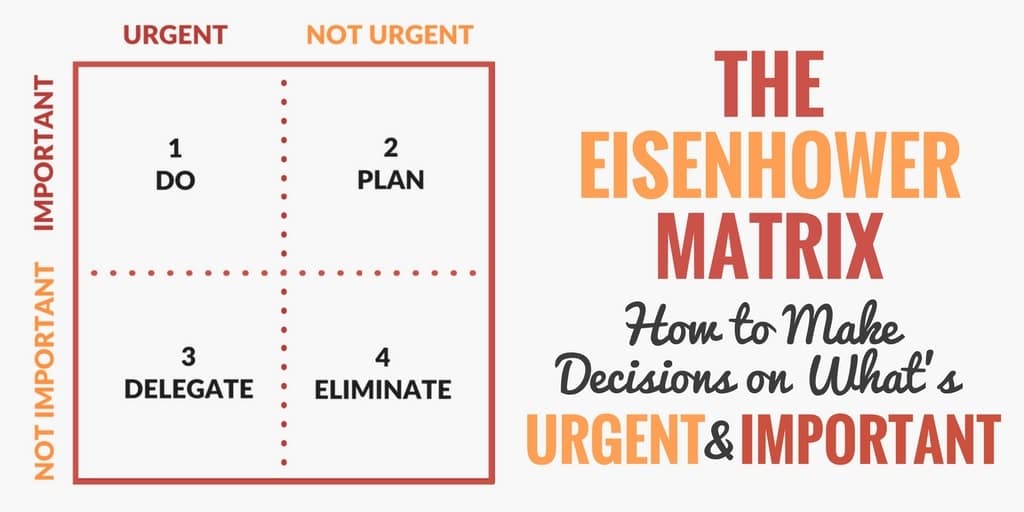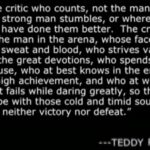Five things to focus on:
1. You:
– The paths to success are not obvious and counter-intuitive e.g. looking out for others instead of yourself will take you forward faster.
– Talks about a book called The Paradox of Success where people who are successful not only want to succeed they want others to fail.
– The Millionaire Next Door book – most rich people drive old cars, live in old houses, not flashy and keep it simple. More connected to friends and families. If they are flashy with their money how do you think they’ll handle your money.
I learned to go into business only with people whom I like, trust, and admire – Warren Buffet
2. Your Market:
– If you get your market right your marketing will sort itself out.
– The aim of marketing is to know and understand the customer so well that the product or service fits him and sells itself. – Peter Drucker
Don’t see them as customers or clients, see them as a business friend. Give them way more value than they expect. Wouldn’t you like that? Connect, build rapport.
– What is the alternate currency of your customers? Loss of health will cost them real currency, making something more efficient will create more currency of time.
– What is something that always helps your clients and how can you give it away for free? Give away 50% but the right 50%. Don’t give it all away.
– What are your prospective niches? What are the key reasons for them to buy your product or service?
Exercise
– What is your customers biggest fear or frustration?
– What is your customer embarrassed to admit even to themselves?
– What is the conversation that is going on in their head? (hint: irrational)
– Common experience?
– Name and describe your representative avatar.
“As I grow older, I pay less attention to what people say. I just watch what they do.” ― Andrew Carnegie.
3. Your Marketing:
– Customer Avatar Creation Model: Create an avatar of what your customer looks like. What are their demographics? Then create an avatar of what your business looks like. Finally, create a conversation of what the avatars would be talking about. If you like you can make a timeline where the start it meeting a customer and end is being in relation with the customer. Fill out the timeline with scripts of what conversations had to occur to get to the end. Focus your conversations only to your customer avatar’s qualities.
– Compassion is the most important thing you need. Not only feeling what the customer feels but wanting to feel, know, help. Help me understand where you’re coming from. Something magical happens when a person feels understood. What would make your prospect feel understood? Qualify buyers better and build trust faster.
– Narrow down and niche your prospect. Then figure out their frustration. Then figure out what their irrational thoughts would be. What’s something they can do immediately to help. Create a landing page catered to give them the solution for free in exchange for an email address. After some time you can send follow up emails with offers or suggestions.
– Test your prices and terms regularly as sometimes the higher the price works better.
– Always find ways to upsell. If you liked this you’ll like this too.
– Plan the experience that you want your customers to have. Flow chart each step. For each experience what is the process that needs to be followed?
– Referrals: Ask happy customers for referrals. Segment contacts and send relevant communication.
– Reverse engineer: What’s the payoff? What’s the time, effort, opportunity, money cost?
5 Models – Think of each one as a business on its own
– Generating leads
– Conversion
– Up-sell
– Backend – follow up and re-market
– Continuity – add more products and services
“Everything should be done in terms of opportunity cost. Opportunity cost is so simple. If you’re gonna make a new investment, your opportunity cost of the new investment is whatever the next best choice you have available is. Now, you go through life like that instead of with this gibberish, all I can say is it works better.” – Charlie Munger
Books: Attention Economy, Experience Economy, Support Economy.
4. Your People:
– If you get your people right your systems will sort themselves out. Get a good mix of personality types, for example, a creative type can figure things out and integrate them in an efficient way, The business person can take care of all the logistics in accounting in everyday business stuff, and the dealmaking person would be the one connecting with people and finding different ways to make deals and collaborate with all the business people.
– Don’t hire people just because you like them or because they’re like you. Use and make data-driven tests and decisions.
– Make sure you are only hiring A players. B players are okay. But C players will bring down even the A & B players. Make a commitment to yourself that you will only hire stars. Once stars connect with each other they will magnify the outcomes, example 3 star players will be like having 6 players, invoking a network effect. Suddenly a cycle of stars becomes a web of people who complement each other and fill each other’s gaps.
– Look for proactive kind of people who you have to tell to take a break because they keep coming to you asking what to do next.
– Make a list of the traits you need to look for in your star players. What are the MUST-HAVES they should possess?
– Hire people who can manage themselves so they need to be led and not managed.
– People are basically complex systems. Their habits and character are stable systems which are very hard to change.
– Eben is against incentives. Connecting an incentive to an intrinsic motivation cuts the ties so they don’t do it for the love but for the prize. The ones who are motivated by incentives are smooth talkers and who over-promise.
– One developed talent is worth 10 average skills. Find someone that fills that specific gap you need and find ways to fill out the rest. It may take 1-2 years to make them profitable for the business after building relationships, learning etc.
– Don’t leave ‘black boxes’ where it would only take one person to figure it out. Don’t blindly copy successful big business.
– Look up Topgrading interview style. The best way to hire A players.
– Find someone who is star quality with less advantage than you and mentor them without cost.
– If someone wants a raise and you can’t give it. Talk to them from their point and tell them you can help them find a better job but right now these are the numbers and I need you to help me grow those numbers after which I can share it with you but if I were you I’d want to leave too.
– Over generalise your team to creatives and organisers.
– Know exactly what you want from people you hire and make it measurable. You buy a printer because you know it will print.
– Important things to focus on is true leadership, relationships and creativity.
Mistakes
– Be careful about liking a person when looking for your team. Liking them is not going to help where you want to go.
– Hiring people who are like you.
– Hiring someone because you want to help them.
– Seeing only the good in people.
5. Your Systems:
– The most paid and successful people had one factor in common – speed of implementation. Implement ideas as fast as you can.
– Effective Executive (book) talks about how you block your time in focused chunks of uninterrupted time you will get much more done.
– So a good balance between talent time and relax time is best. Think of your talent – something you are naturally good at or have become good at and then think of what it is you do to completely rejuvenate that you are recharged and resend it when you come back to work. Pick the top 2 for both. Remove frictions and blocks, create conditions and structures. What are the frictions and blocks in talent time and relax time and what conditions and structures that will help you get the most out of it.
– Huddle: What are your top 3 priorities? Where are you at? What help do you need?
– Run your system and measure the performance. Track the numbers, put them up and see them visually. Let your team see it. Tell your team to look for problems, they will help solve issues.
– If you learn something and you like it or it helps you… TEACH IT TO YOUR TEAM.
– Multitasking stops you from going into the flow state and it’s not efficient. Efficiency compounds on itself while multitasking does the opposite.
– Instead of setting goals with the team ask what some problems are that need to be solved right now.
– Send free recordings to avoid buyers remorse and refunds while the customer waits for the product to arrive.
– Manufacture your own credibility by video recording your happy customer’s reviews.
– Look as what you do best and focus on building that, outsource everything else.
– Taking your company public (offering stocks/shares) is the best way to create money. Once you’re in the market you get outside capital which is the best way to grow your business and make it worth a lot more. The point is making your company the product.
– Cut out unnecessary meetings. Think, if this meeting goes well what will happen next? Why not meet all the people that you will be meeting in the future in one big meeting.
– Profit is number one or your business will not last but don’t make money into a god.
– Sacred exercise: share your bigger picture. Say what you’re really doing it for. What’s your current business contribution making a difference in the world? Next, what is the future contribution?
If you can’t describe what you are doing as a process, you don’t know what you’re doing. – W. Edwards Deming

Contents of the Workbook
1. Getting altitude
2. Get out of the “Grey Zone” worksheet
3. T-Time & Re-time strategising worksheet
4. Your T-Time & Re-Time days worksheet
5. Creating your customer avatar
6. Creating your “Customer Avatar” worksheet
7. From “How” to “Who” … finding stars
8. Your star profile worksheet
9. Learning to think in systems worksheet
10. Personal productivity
11. The productivity pyramid
12. The entrepreneurial Achilles’ heel
13. Creating your category & dominating your niche market
14. Creating & dominating your niche category worksheet
15. Your 5 marketing models
16. Planning your product curriculum worksheet
17. Identifying money making worksheet
18. Your 5 money-making models worksheet
19. Creating and scripting your business friendships
20. Move the “Free Line” worksheet
21. Becoming pro-active about finding stars
22. Creating your “Virtual Bench”
23. How to become “Business Instrument Related”
24. Entrepreneurial management and leadership
25. Entrepreneurial management and leadership (Continued)
26. The road ahead worksheet
27. Inevitability thinking exercise worksheet
28. Use case thinking worksheet
29. The bigger contribution worksheet





